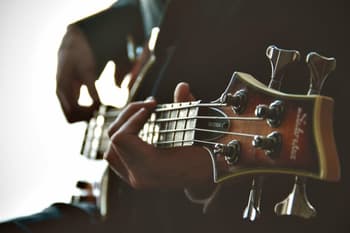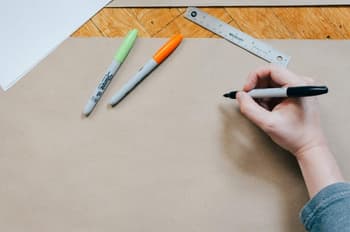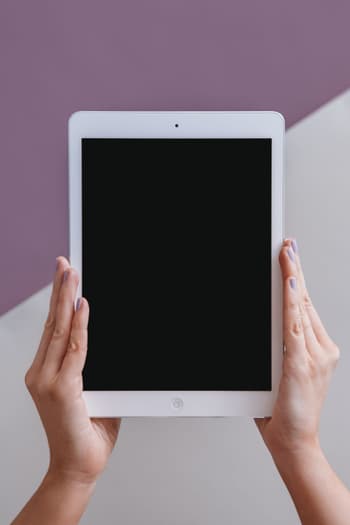In Short
-
Copyright grants creators exclusive rights to their work, allowing them to control its reproduction, distribution, and adaptation.
-
Copyleft, on the other hand, promotes the free use and modification of works, often used in open-source software.
-
Key differences include copyright’s focus on individual control, while copyleft fosters community sharing and development.
Tips for Businesses
Understand when to apply copyright to protect your creative work and when copyleft might be suitable, especially for software or collaborative projects. While copyright gives exclusive control, copyleft allows others to modify your work, promoting broader collaboration. Consider your long-term business goals when choosing between these protections.
Table of Contents
Intellectual property is a valuable asset of your business, and it is essential to take the necessary steps to secure its protection. One type of intellectual property that a business can own is copyright. Copyright gives the owner an exclusive right to reproduce, reuse and republish specific material. However, there is a school of thought that seeks to override copyright and allow anyone to modify specific pieces of work. This form of licensing is known as copyleft and is commonly used in relation to software development. This article will explore the meaning of both copyright and copyleft and explain how they can affect the protection of your intellectual property.
What is Copyright?
Copyright protects the creative expression of ideas, including in the following forms:
- written pieces;
- music;
- visual images;
- moving images; and
- computer programs.
It provides the exclusive rights to use, copy, license, perform and modify the creative work.
Copyright attaches automatically to original artistic works. Therefore, you do not need to register the right. The work gains copyright protection when an author or creator expresses the idea in material form. Accordingly, you do not have to publish material work for it to have protection under copyright law. For example, if you write a book but do not publish it, the work will still receive copyright protection.
For material work to gain automatic copyright protection in Australia, it must:
- be an original literary, dramatic, musical or artistic work and not merely a copy of another;
- have been created by an Australian resident or citizen; and
- have been made or first published in Australia.
While copyright protects the expression and execution of ideas, it does not protect the ideas themselves. Copyright prevents others from copying or using the work without attributing it to the owner. Therefore, others can only legally republish or reproduce the copyright material with the owner’s permission.
Australian copyright law provides for “fair dealing” exceptions that allow someone to reproduce part of the works for particular purposes like:
- reporting the news;
- satire;
- parody;
- use in education; or
- reproduction in the public interest.
Monitoring Infringement
As the copyright owner, it is your responsibility to monitor copyright infringement as your material works are an essential asset. Therefore, you should monitor infringement to ensure that others do not benefit from copying the work without correct attribution.
To establish copyright infringement, you will need to establish that:
- there has been a substantial reproduction of the original work; and
- the final product is similar to the copyrighted work or material.
How Long Does Copyright Last?
The length of copyright depends on several factors, including the subject matter and whether the copyrighted material was published. Determining the length of copyright can be tricky, so it is essential to consult an experienced intellectual property lawyer to ensure you are not infringing on copyrighted work.
Another complicating factor can include the relevant legislation that applies. The length of copyright used to be 50 years. However, after Australia entered into the Australia-US Free Trade Agreement, the Australian copyright legislation was amended to cover the life of the creator plus 70 years. Despite this, the copyright status of older expired works was not applied retrospectively.
What Happens When Copyright Expires?
When copyright expires, the works are taken to have entered into the public domain. When an item of work enters the public domain, it is no longer protected by copyright law. Therefore, it can be used freely without risking infringement. Examples of prominent works that have entered into the public domain are Sherlock Holmes and, more recently, Steam Boat Willy.
What is Copyleft?
Copyleft, as the name suggests, heads in the opposite direction to copyright. Playing on the word ‘copyright’, copyleft overrides copyright and promotes the concept that materials should be:
- freely used;
- copied; and
- modified by others.
Copyleft also requires that all versions of the material that users modify are freely accessible so that others can use and modify them. The principles of copyleft are commonly used within the software industry, where source code is often free for anyone to modify.
However, it is essential to remember that Australian law vigorously and automatically protects copyright without registration requirements. Therefore, individuals and corporations can face severe penalties for infringing on someone’s creative work.
Key Features of Copyleft
Copyleft finds its roots in the open source movement, which promotes the idea of collaboration. Therefore, some of its key features include:
- not restricting anyone from selling or redistributing the software;
- not restricting anyone from distributing modified or derivative works;
- applying the same licence terms to all parties to which you distribute the software;
- providing the source code in a form that aids the development of the software;
- acknowledging each author’s contribution to each modification; and
- no warranties supporting the performance of the software or that no one’s intellectual property rights have been infringed.
Copyleft Licencing
As stated above, copyleft licences aim to facilitate the use of copyright works by encouraging the dissemination of helpful information. Copyleft licensing, frequently applied in relation to software, makes source code readily available and allows others to modify and develop the code. The internet provides a suitable platform for sharing and developing source code. Therefore, open collaboration results in faster and more efficient development.
Some IP licences that try to incorporate the copyleft concept include:
- GNU General Public License;
- Creative Commons Attribution-Share Alike License; and
- Copyleft.org.
Creative Commons and Copyleft
Copyleft licensing is a form of Creative Commons licence. This is a system where a creator allows others to use their work without infringing copyright as long as the user complies with the terms of the licence.
There are several different types of licences, though all licences require that the user still attribute the work appropriately. Attribution requirements vary depending on the type of Creative Commons licence. Nevertheless, the requirements generally prescribe that others must acknowledge the work’s original creator and adhere to the conditions attached to each licence.
Importantly, you cannot revoke a copyleft licence. Although you may initially create source code or other copyright material for the enjoyment of others, it may become profitable at a later stage. Therefore, you should consider your decision carefully in light of the purpose of the copyright material.

This fact sheet outlines your rights and obligations as an AI artist regarding intellectual property and copyright.
Key Differences Between Copyright and Copyleft
| Feature | Copyright | Copyleft |
| Purpose | Protects the creator’s exclusive rights | Promotes free sharing and collaborations |
| Default state | Restrictive; all rights reserved | Permissive; some or all rights granted |
| Licensing | Creators can grant specific permissions | Requires derivative works to be released under the same license |
| Focus | Individual ownership and control | Community sharing and development |
| Common use cases | Artistic works, commercial software and traditional media | Open source software, creative commons licensed material. |
Key Takeaways
When creating intellectual property, it is crucial that you are aware of the different protections available to protect your work from imitators. Whilst copyright protection is automatic and simple, you may wish to consider revoking this right if you work in creating software to allow others to modify your source code. However, this decision is irrevocable, and you must carefully consider whether it is right for your business.
If you have any questions on copyright or copyleft, our experienced intellectual property lawyers can assist as part of our LegalVision membership. For a low monthly fee, you will have unlimited access to lawyers to answer your questions and draft and review your documents. Call us today on 1800 875 477 or visit our membership page.
Frequently Asked Questions
Who is the author?
The author or creator of a copyright work is usually the person who first produced it. Therefore, the author is not the person who has the idea or concept first. Instead, it is the person who first gives expression to that idea.
What is licensing?
An owner of a copyright work can permit another to use their work. This is known as licensing your intellectual property and can be subject to certain conditions you put in place as part of the licence.
What does exclusive right mean?
As an owner of the copyright in literary, dramatic or musical works, the law provides you with an exclusive right to:
- reproduce the work in a material form;
- publish the work;
- perform the work in public;
- communicate the work to the public; and
- make an adaptation of the work.
We appreciate your feedback – your submission has been successfully received.











